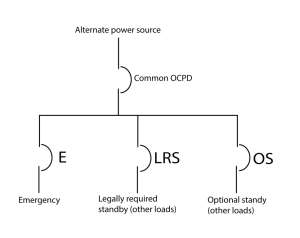How does NEC 2023’s updated load management approach improve emergency power system efficiency?
Overview
Load management techniques play a crucial role in optimizing power distribution, enabling users to prioritize their critical loads during emergencies when the main power source fails. This allows even smaller backup power sources to efficiently supply a subset of the connected load. However, earlier versions of the NEC prescribed particular load management strategies, which caused uncertainty among users and hindered the broader application of these practices. To improve this situation, the NEC 2023 updated Section 701.4(C) to encompass the more general term “load management”, thus providing greater versatility in the execution of different strategies. This change aims to promote the effective use of load management strategies to meet critical demands during emergencies.
However, earlier versions of the NEC prescribed particular load management strategies, which caused uncertainty among users and hindered the broader application of these practices. To improve this situation, the NEC 2023 updated Section 701.4(C) to encompass the more general term “load management”, thus providing greater versatility in the execution of different strategies. This change aims to promote the effective use of load management strategies to meet critical demands during emergencies.
Applying the 2023 Code
Load management techniques are commonly employed to optimize power distribution, especially during emergencies when there’s a significant imbalance between supply and demand caused by the failure of the normal power source. In such situations, a range of strategies can be utilized to alleviate the effects of the power loss. These techniques, including automatic selective load pickup, load shedding, peak shaving, demand response, load balancing, and energy management systems, provide essential loads with power when needed, optimizing the efficiency of emergency backup power systems.
In previous editions, NEC Section 701.4(C) stipulated that emergency power systems should be capable of supplying legally required standby and optional standby system loads. This could be achieved either by appropriately sizing the emergency power source based on load studies or by implementing automatic selective load pickup and load shedding techniques. However, the specific requirement for these strategies caused confusion among end users who wanted to explore other load management techniques. This uncertainty led to improper practices and a general hesitancy to embrace load management strategies.. In light of this, the NEC 2023 revised Section 701.4(C) to employ the term “load management” rather than detailing specific methods, yet still including the strategies that were previously mandated.. This change aims to promote the adoption of a wider range of load management strategies to meet critical demands.
What’s New for the 2023 NEC?
The table below presents a comparison between the 2020 NEC and the 2023 NEC regarding Section 701.4 (C).
2020 NEC |
2023 NEC |
| 701.4 Capacity and Rating
(C) Load Pickup, Load Shedding, and Peak Load Shaving The alternate power source shall be permitted to supply legally required standby and optional standby system loads where the alternate source has adequate capacity or where automatic selective load pickup and load shedding are provided that will ensure adequate power to the legally required standby circuits. |
701.4 Capacity and Rating
(C) Load Management The alternate power source shall be permitted to supply legally required standby and optional standby system loads where the alternate source has adequate capacity or where load management (that includes automatic selective load pickup and load shedding) is provided that will ensure adequate power to the legally required standby circuits. |
